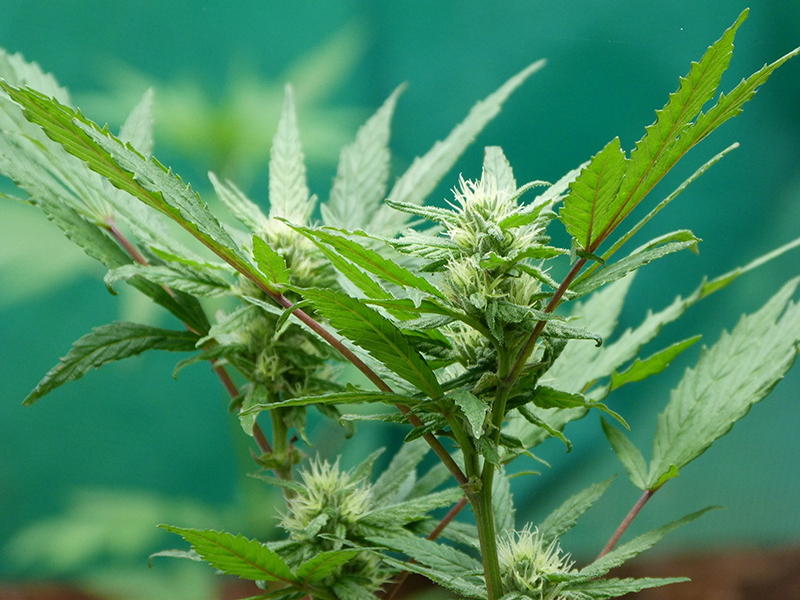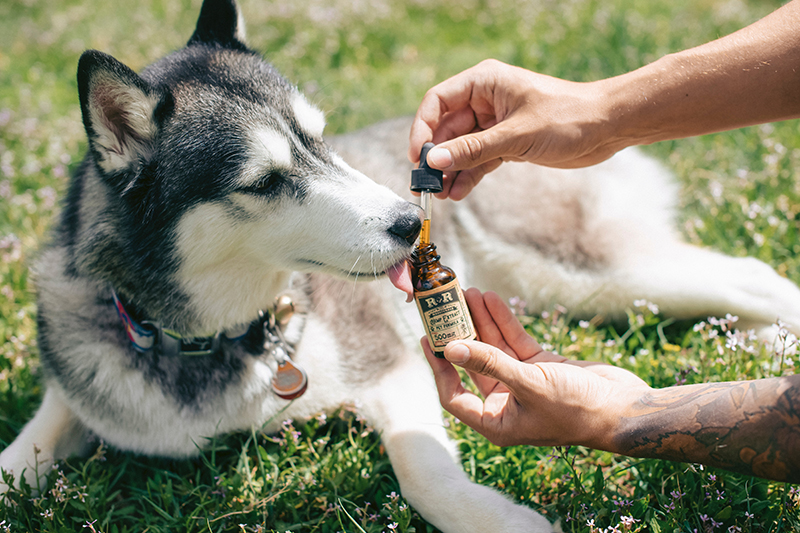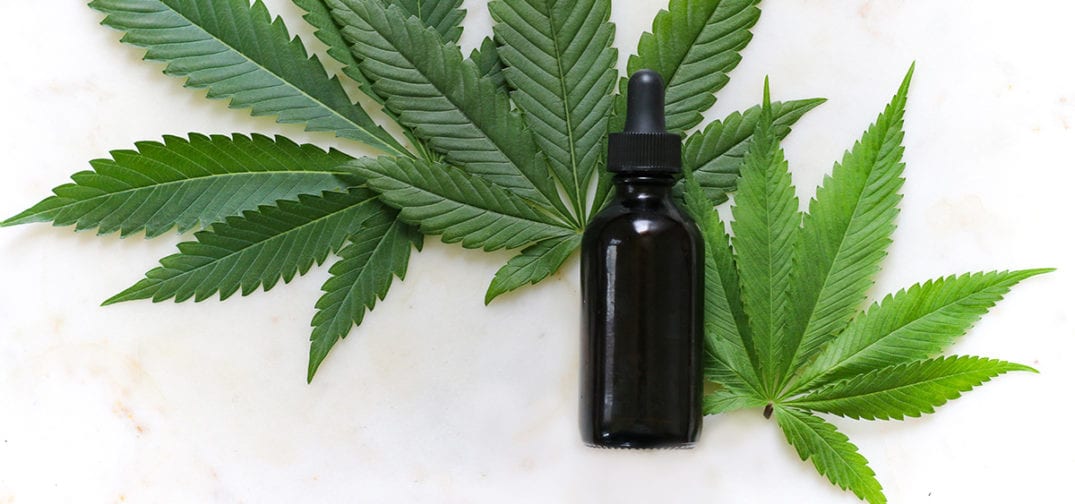What is CBD and where does it come from?
Cannabidiol (CBD) is one of over a hundred naturally occurring cannabinoids present in cannabis, whose demand has recently skyrocketed with the advent of tinctures, CBD vape pens, and CBD infused beverages. Cannabidiol is abundant in cannabis — nearly as prominent as the well-known and intoxicating cannabinoid THC.
Both CBD and THC exist in the cannabis plant in the form of their acid precursor (CBDA and THCA). They must be heated, or decarboxylated, in order to become active. Although the specific chemical structure of CBD was discovered in 1963, the earliest use of CBD could date back to 2737 B.C. by Chinese emperor Shen Neng. When cannabis reached American land, it was widely used by settlers for fiber production, inflammation, and disease. It wasn’t until 1914 that cannabis and CBD use was criminalized under the Harrison Act, with stricter regulations to come with the Marijuana Tax Act of 1937.
In 2018, hemp-derived CBD was federally legalized via the Farm Bill’s passage, which has led to a notable increase in CBD awareness and new products.

Cannabinoid receptors & the Endocannabinoid System
The Endocannabinoid System (ECS) is a set of natural pathways in our brain and body which carry messages to various regions to manage and regulate pain, appetite, mood regulation, and memory. The ECS was discovered by Israeli scientists in 1992 at the Hebrew University of Jerusalem.
The endocannabinoid system is made up of two main receptors: the CB1 and CB2 receptors. Many receptors act as channels and when “activated” by specific molecules (in this case THC, or naturally occurring endocannabinoids 2-AG and anandamide), they allow ions to rush through, creating a further cascade of signaling to relay specific messages. 2-AG and anandamide are produced by the body to regulate fetal development, mechanisms of reward, working memory, and other various physiological functions. Outside the brain, the ECS is known for its role in immune support.
THC is considered an “exogenous” cannabinoid, meaning it is not naturally produced by the body, but still activates CB1 and 2 receptors when present. Interestingly, CBD does not directly attach to or activate CB1 or 2 receptors. Instead, it works with serotonin, an enzyme called fatty acid amyloid hydroxylase (FAAH), and other receptors. These messages then can indirectly activate the endocannabinoid system to create the therapeutic and behavioral effects seen.
CBD oil for inflammation and neuropathic pain
One of the most heavily researched applications of CBD is its benefits for inflammation. CBD has been seen to have anti-inflammatory effects on the nervous system, especially in pathologies like arthritis and inflammation related to the gut. There have been many theories as to how CBD reduces inflammation; some studies found that it does so by targeting glycine receptors (glycine is an amino acid naturally produced by our body). CBD administration also alleviates inflammation by reducing the production of signaling molecules called “inflammatory cytokines,” and by acting on TRPV1 receptors. Just like how CBD activates many different pathways and only acts on CB1 and 2 receptors indirectly, its anti-inflammatory properties take on similar characteristics of targeting various receptors and signaling pathways to achieve the effect you experience as weakened pain.

Both THC and CBD have been given to cancer patients undergoing chemotherapy to decrease its intense side effects like pain and nausea. CBD also has alleviated pain in patients with multiple sclerosis. Savitex is an oromucosal sprayable compound (or mouth spray) created by GW Pharmaceuticals, which contains a mixture of CBD and THC and helps decrease neuropathic pain in patients suffering from sciatica, MS, cancer, arthritis, and other ailments. However, because this medicine contains THC, side effects included its characteristic intoxication. Therefore, some believe that CBD oil (like in tincture form) may be a better alternative, especially as research continues and scientists learn how to increase the bioavailability of CBD given orally.
CBD oil for anxiety and sleep
A comprehensive case study published this year found that CBD oil was helpful in the treatment of both anxiety and insomnia. Psychiatrists administered 25, 50, and 75 mg of CBD to 72 adults in a clinical setting. After the first month, 79.2% of the patients struggling with anxiety reported improved affect and had lower anxiety scores. Additionally, 66.7% of those complaining about insomnia had improved sleep scores.
Specifically with anxiety, scientists think these results could be because, with long-term use, CBD activates and rescues impaired 5-HT (aka serotonin) receptors. In terms of sleep, less is known about the exact mechanism at play, but a rodent model of insomnia found that CBD administration increased total sleep time in rats. Scientists also think CBD’s beneficial effects on sleep have to do with anxiety — insomnia and anxiety tend to be comorbid conditions so, if you decrease anxiety, you should be able to sleep better — but more research needs to be done in this area to discover how exactly cannabidiol acts on our brain’s receptors to help with insomnia.

CBD oil for pets
You may have seen signs around town exclaiming “CBD for Dogs — We Have it Here!!” While at first glance this may seem somewhat ridiculous, there is some science to back it up. A 2018 study found that osteoarthritic dogs given a repeated dose of 2 mg/kg of CBD for four weeks saw decreased pain scores and increased comfort. While there is less ability for observing how this happens in the brain compared to laboratory animals, these results are still promising for a new avenue of CBD treatment.
It is also speculated that CBD can help ease pet anxiety during stressful times like July 4th fireworks. We know CBD alleviates anxiety in humans; animals too release stress hormones when feeling anxious or potentially threatened. If CBD is able to work similarly in dogs and other pets, it would make sense that giving your animal some CBD could reduce their anxiety during specific situations like holidays or trips to the vet.

More research is underway
Now that hemp-derived CBD oil is federally legal, scientists have more freedom to conduct research that will help educate cannabidiol users on just how it gives them relief for various ailments. However, the FDA still lists CBD as a dietary supplement and not a drug, which means there is generally less regulation and less known about this seemingly benign substance.
Despite this, there is positive and promising evidence that CBD can help a variety of conditions without the nasty side effects or propensity for abuse that comes with other drugs like opioids. Hopefully, via the advent of CBD, we are on our way to a new status quo where death by opioid overdose is decreased while pain relief itself becomes more widespread.
Get daily cannabis industry news and insights. Subscribe
End
